Hey Mike-
Here’s one I hadn’t seen or heard about before: A few days ago we were making reservations at the San Angelo TX KOA and the manager was insistent that the trailer electrical matched the output of the pedestal. Dog bones from 50-30 amp or 30-50 amp were not allowed. She was so insistent that if we showed up and needed to use a dog bone she would refund our money and send us down the road!
When we arrived I asked her the reason and she said it was due to insurance and fire danger. There were two of us traveling together, one 30 amp and the other 50 amp so we were parked in different areas of the park. Have you seen this before?
Oh, the irony was they sold dog bones in the office! 🤪 - Walt C.
Hey Walt,
As long as the campground pedestal is wired properly, any quality 30 to 50-amp or 50 to 30-amp dogbone adapter should be safe from catching on fire. There are a few exceptions, but that’s what your campground seems to be concerned about. And I have never heard of an insurance company not allowing dogbone adapters in a campground.
Safety first
Note that since safety is my primary concern, I’m not going to suggest or condone anything dangerous. And there are a few adapters that may not be totally code compliant in all states, but which I believe are safe if used properly. However, in all cases you may find that your local electrical inspector (the AHJ, for Authority Having Jurisdiction) has a problem with a certain type of adapter – and it’s within his or her rights to disallow it. But it sounds like this campground is going overboard with their pedestal paranoia.
It’s a jungle out there…
For any new RVers, you should be aware that just because you have a 30-amp or 50-amp shore power cord on your RV, there’s no guarantee that you’re going to find a matching (and working) electrical outlet at your camping spot. That’s why shore power cord adapters were created.
But while there are all sorts of RV power adapters available from major sales sites such as Amazon and eBay, not all of them are safe to use with your RV. That’s why electrical education is important.
So why do we need adapters?
The answer is that not all campgrounds (and campground pedestals) are created equal. Some of them will have all three types of receptacles (a 20-amp, 30-amp and 50-amp outlet), but many of them will be 30-amp only, or maybe just a single 20-amp outlet in some rural campgrounds. Does this mean you’re SOL, or is there a way to plug in anyway?
Yes, but…
The answer is yes, but there’s no way to get blood out of a turnip. That is, you can’t make a 20-amp or 30-amp outlet give you the same amount of power as a 50-amp outlet. And sometimes you can use a 50-amp outlet to power a 30- or even 20-amp RV.
You will also find that some older campgrounds have badly worn or miswired pedestals that may be not safe to plug into. And while many times there are safe workarounds, but it always has to be done carefully with a full understanding of how much power is available and how much power your RV appliances can demand.
A deeper look….
First, let’s take a look at a full-service pedestal with 50-, 30- and 20-amp outlets. This is typically found in new RV campgrounds, and it does offer the most flexibility (and power) for your RV’s electrical system, no matter what shore power cord it has.
Note that I’m calling this a 100-amp pedestal because it should be capable of providing a full 100 amps of power at 120 volts (50 plus 50 amps). And in many cases it can also supply 30 amps and 20 amps at the same time. But there’s no guarantee it has been wired that way, so caveat emptor.
The candidates
Here, perhaps, is the most common type of adapter you might encounter. And yes, it should be safe as long as the pedestal outlet is wired properly and the contacts are not loose or corroded.
Let’s assume you have a 50-amp shore power RV but need to plug into a 30-amp outlet. Yes, technically the 50-amp connector should be wired for 240 volts, but in actuality it’s two separate legs of 50-amp power at 120 volts, and only the largest coaches use 240 volts. So a 30-amp to 50-amp adapter simply feeds the 30-amps of current at 120 volts into both hot legs of your 50-amp shore power cord.
Available power from a 30-amp outlet
This works, but with only 3,600 watts of power available compared to the 12,000 watts you should be able to get from a 50-amp pedestal outlet. From a practical standpoint this suggests you’ll need to do some manual load shedding by not turning on too many high-power appliances at the same time.
That means you probably can’t run your convection microwave and air conditioner at the same time, and your daughter’s 1,800-watt hair dryer can’t be combined with any other big wattage item. Don’t worry if you go over your 30 amps of allotted power as the circuit breaker in the pedestal or your RV’s power center should trip. Don’t shoot the messenger though, as it’s only doing its job.
Reverse it…
But what if you have a 30-amp shore power RV and you want to plug into a 50-amp pedestal outlet. Is that safe? Will it feed 240 volts into your 120-volt RV and blow it up? The first answer is if your RV power center is properly wired with a 30-amp master circuit breaker, then using a 50-amp to 30-amp adapter to plug your 30-amp shore power cord into a 50-amp outlet should be safe from overload.
However, note that this is technically a code violation that your campground (or the local inspector) may not allow. Still, the major manufacturers do build these things, and I agree that in many campgrounds the 30-amp outlets are so worn out that they’re a bigger hazard to plug into as it is.
So, as long as your own shore power cord and RV power panel are properly wired and maintained, there shouldn’t be any danger of overheating the wire with too much current. But always be watchful of any hookup like this because there is a fire hazard if something goes wrong in your RV’s power panel.
What about 50- to 20-amp adapters?
Well, those are in their own extreme danger category since it would be way to easy to plug a 14-gauge extension cord (rated for 15 amps of current) into an outlet that can supply 50 amps of current. And that’s a recipe for extreme overheating and a fire.
A safer solution
However, while you really don’t want to use one of these cheap 50- to 20-amp dogbone adapters, I did find a version that includes a pair of 20-amp circuit breakers, one for each 20-amp duplex outlet.
Note that with the little red push-button circuit breakers, and the heavy wire rated for 50 amps of current, I think this version should be perfectly safe to use at a spare 50-amp pedestal if you need to run a couple of deep fryers or whatever for an outside party.
What about 30/30 to 50-amp Y adapters?
You can get a double 30-amp male to single 50-amp female Y adapter from companies such as Southwire and Camco. They should work if you can get access to two different pedestals.
However, if both 30-amp outlets on the two pedestals are on the same incoming hot leg, then it’s possible to draw up to 60 amps of current through the 50-amp neutral. But even though that’s technically a code violation, there’s probably limited danger of actual overheating if everything else is clean and maintained. Still, you’ll want to carefully watch for overheating if you’re running a lot of appliances and air conditioners.
What about 15/30 to 50-amp adapters?
The big caveat is those 15/30-amp to 50-amp Y adapters, sometimes called 45-amp adapters since they have a 15-amp and 30-amp male plug feeding a 50-amp female outlet. If the pedestal is wired properly with a GFCI on its 20-amp outlet, then the combined neutral currents will cause the GFCI outlet or breaker to instantly trip. If not, then the GFCI has failed or somehow been disabled, which is a serious code violation.
Hockey puck adapters
I only use adapters from quality companies such as Camco and Southwire. That’s because nearly every adapter failure I’ve seen has been one of those super-inexpensive puck adapters that were likely not assembled correctly to begin with.
So I would look at any of these with a jaundiced eye. Plus they tend to twist the plug contacts out of the outlet from the weight of the cord hanging off of them, so I think they’re a bad idea in general, unless you can properly manage the cord weight twisting problem.
Electricity can be your best friend or your worst enemy if you don’t understand the rules.
So let’s play safe out there…. Mike

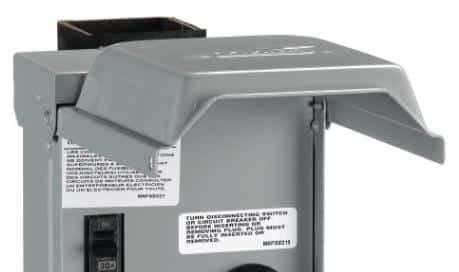




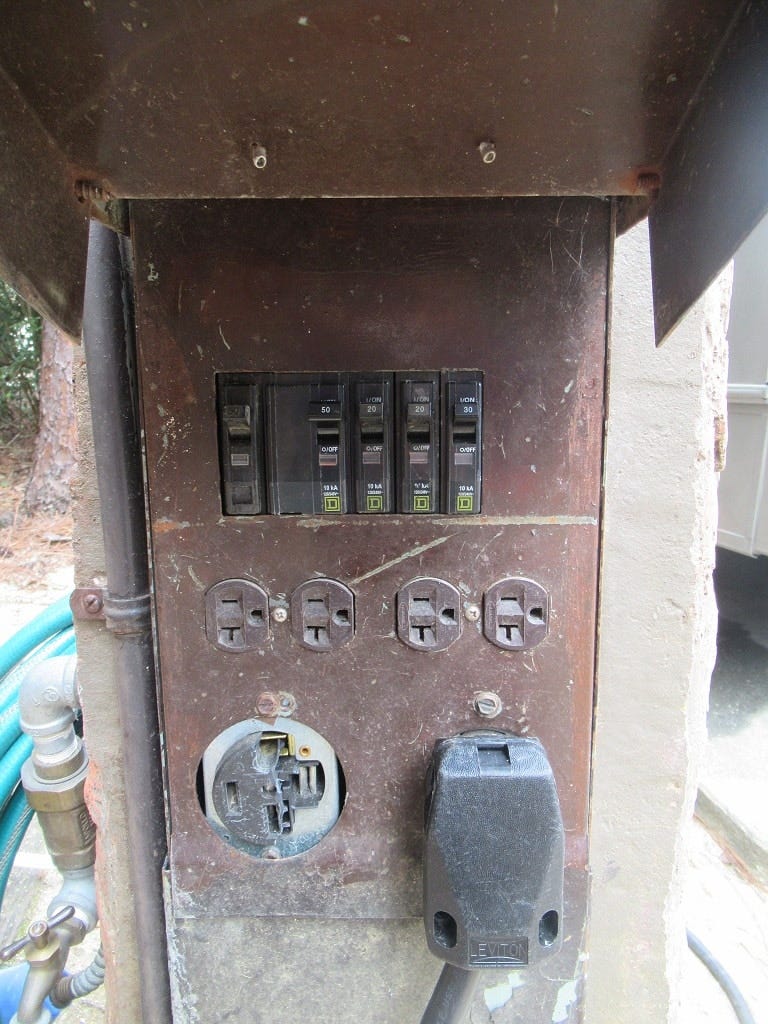
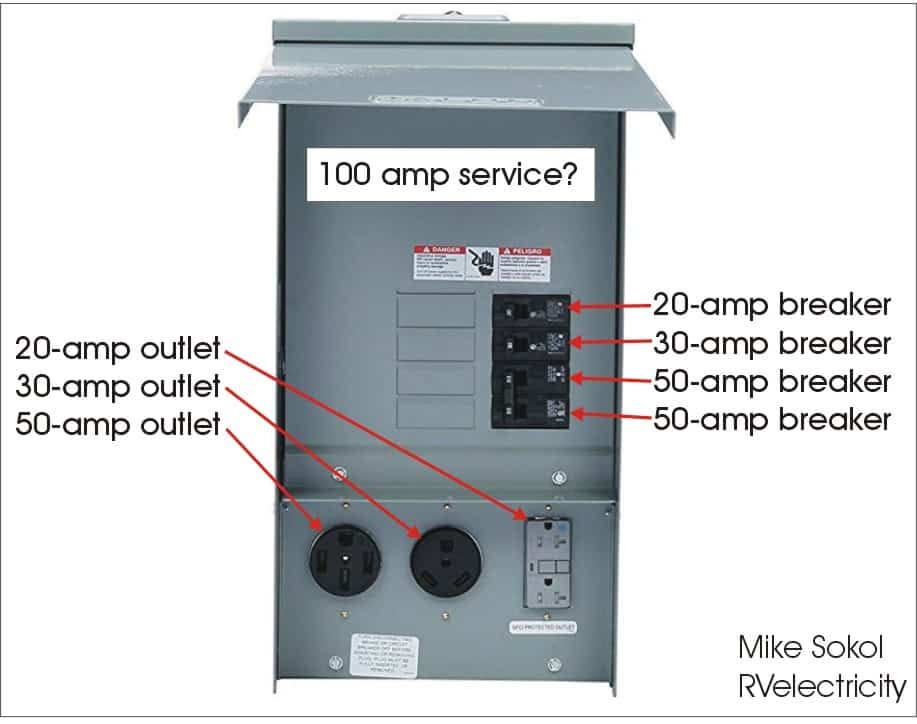
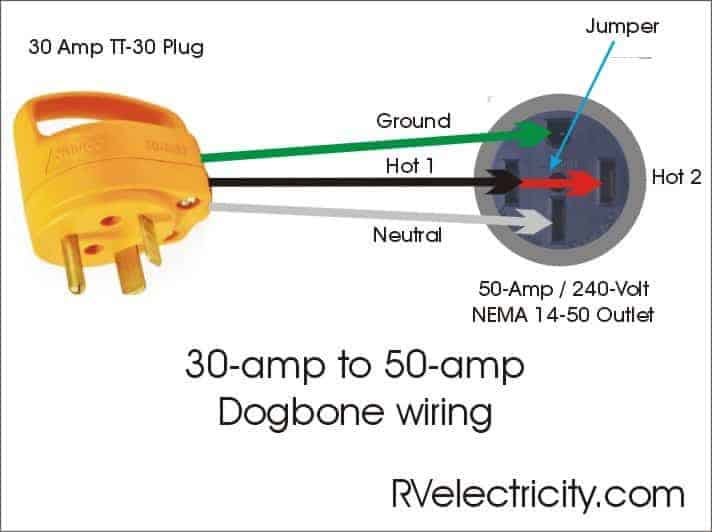
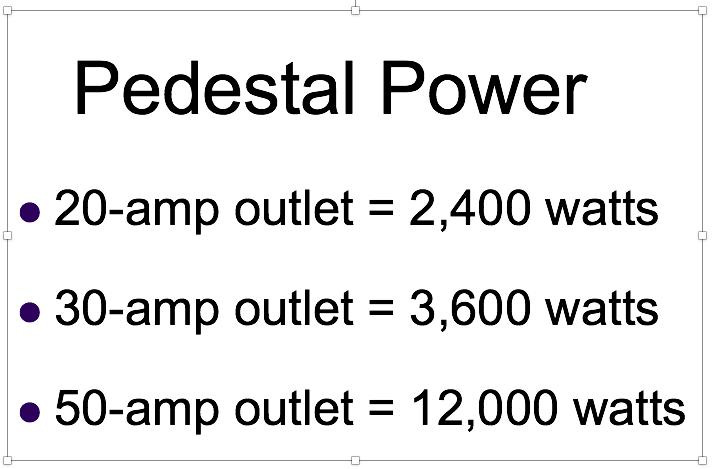

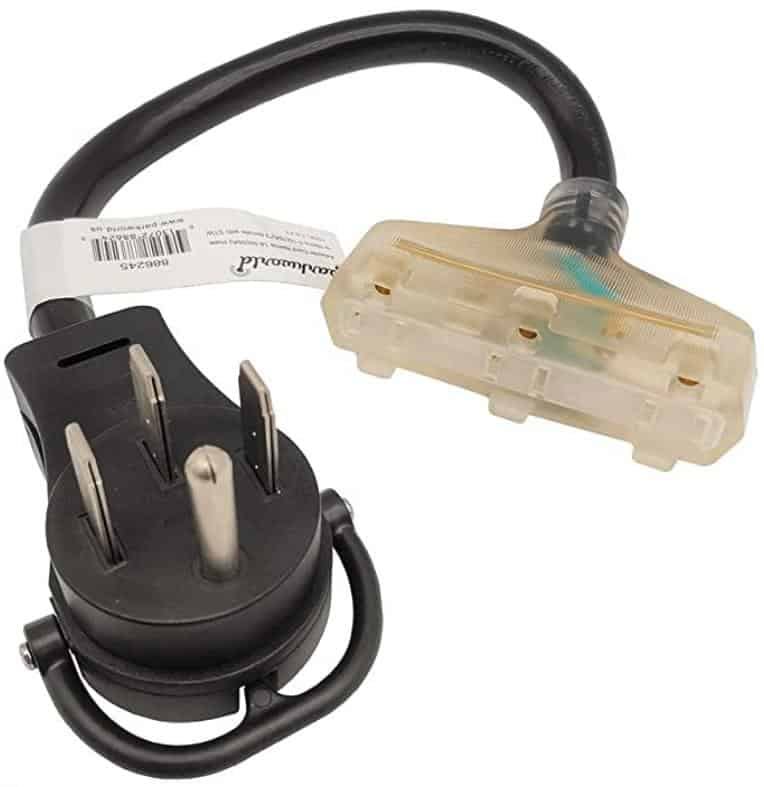
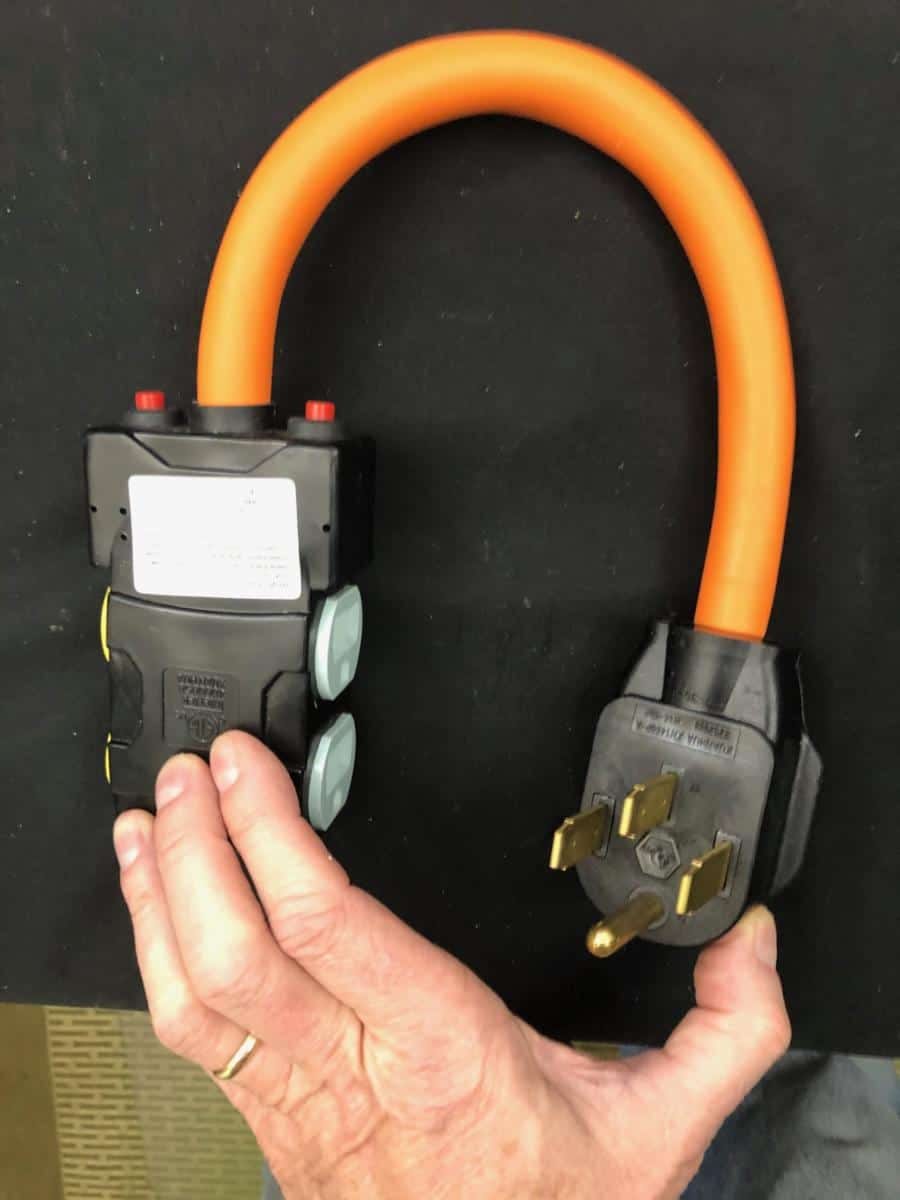


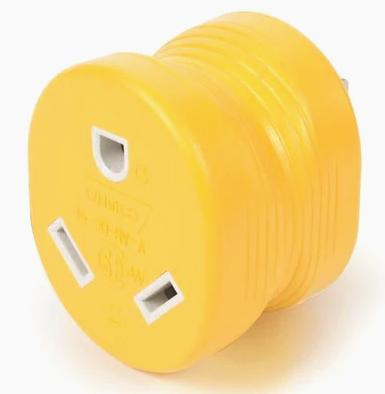

Folks call them Dogbone adapters, I call them cheater plugs. I can understand RV parks enforcing a proper cord and plug be used at their site pedestal. Owing a 30-amp rig, half the time I find loose, damaged, or otherwise unsuitable 30-amp receptacle. And I concur, using a 50-to-30-amp cheater is a hazard from the pedestal to my 30-amp circuit breaker, despite that a 30-amp receptacle in the pedestal could very well be connected to several hundred amperes of potential current flow, yet protected by its own 30-amp circuit breaker right in the pedestal. The 30-amp receptacle in RV parks is the “Workhorse” of campgrounds. Many 30-amp rigs can trip a breaker easily if using everything at once. And a 50-amp rig using a cheater plug in parks lacking 50-amp receptacles, I think is one reason the 30-amp receptacles I find tend to be so abused, never mind they are only receptacles most rigs can connect to. RV parks usually do not inspect and test the electrical systems of rigs. They have no clue if rigs have been altered or designed safely from the factory. Their best protection is to require a proper plug and cord be used with the site reserved and/or paid for. And their rules may very well protect all the folks in the park, not just an inconvenienced traveler. Never mind what folks think a 30-amp circuit should do, I keep my sustained current draw at 24 amps or lower (two 12-amp appliances) leaving a bit of headroom to toast some bread or warm something in the microwave oven for a few minutes to avoid problems when traveling.
Excellent article. I highly recommend the use of an Electrical Management System (EMS) device as the item into which you connect your RV. If you are using adapters, especially some of the more complicated arrangements, the EMS should be placed after the adapters. and the location into which your shore power cord is connected. There are just too many things that can go wrong with a campground pedestal to risk one's safety and the safety of one's RV, which likely cost tens of thousands (or hundreds of thousands) of dollars. Depending upon the brand, the current capacity and the source, EMS devices can be purchased beginning in the low $200's and, IMHO, a much better investment than a "surge suppressor."